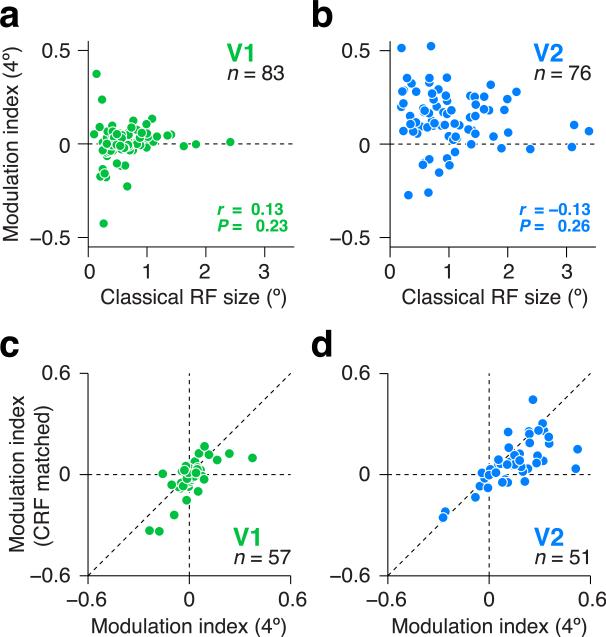Figure 3.
Receptive field size does not explain differential responses to naturalistic texture stimuli in V2. (a,c) V2 neurons (blue). (b,d) V1 neurons (green). (a,b) Modulation index (difference in response to naturalistic and noise stimuli, divided by the sum) measured using stimuli presented within a 4° aperture (ordinate) versus classical receptive field size (abscissa). Each data point represents a neuron. There was no evidence for a relationship between modulation index and classical receptive field size in either V1 or V2. (c,d) Comparison of modulation indices measured using stimuli presented in an aperture matched in size to the classical receptive field (ordinate) versus indices measured using stimuli presented within a 4° aperture (abscissa). Each data point represents a neuron. Diagonal dashed line is the line of equality. Modulation in V1 was near 0 for both stimulus sizes. Modulation in V2 was positive for both stimulus sizes, but there was significantly less modulation in V2 for the smaller size.

